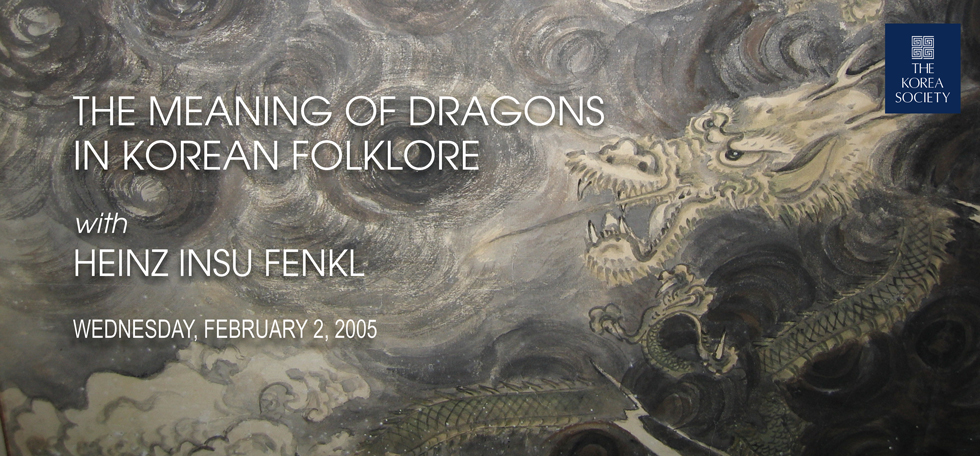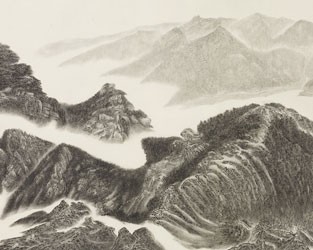![]()

To mark the opening of an exhibition of Korean dragon paintings, author and folklore specialist Heinz Insu Fenkl, director of the Interstitial Studies Institute at SUNY New Paltz, lectured on dragon symbolism in both the East and West. Due to its association with serpents in the Old Testament, he explained, the dragon was considered a creature of evil in the West. In the folklore of the East, however, the dragon was viewed as auspicious and usually was depicted as a magical creature of unsurpassed power and vitality.
Fenkl went on to elucidate the subtle but important differences between Korean dragon iconography and the more widely known Chinese dragon imagery. Dragon mythology originated in ancient China, Fenkl noted. The legendary founder of Chinese civilization, Fu Hsi, was said to be half-man, half-dragon. After the folklore disseminated to the Korean Peninsula, however, local artists and storytellers made their own adaptations. Compared with their Chinese counterparts, Korean storytellers placed more emphasis on the spiritual powers of dragons. In fact, dragons play a role in many of the most important Korean myths and fables even though they generally are assigned to peripheral roles where their actions reflect the virtues of the main characters. Fenkl described one important figure, the Dragon King, who was said to live in a palace beneath the sea and was generous and welcoming to a fault. Dragons are still omnipresent in modern day Korea: on billboards and logos and in brand names and commercials. Unfortunately, while Koreans recognize them, these days knowledge of the folklore behind these cultural icons is fading. "This is all the more reason," Fenkl concluded, "to take the time to really study the paintings hanging in the gallery."
Gallery Talk
with
Heinz Insu Fenkl
Director, Interstitial Studies Institute, SUNY New Paltz
Wednesday, February 2, 2005
Picture from the exhibition,
Songs of Flying Dragons. (February 2-April 15, 2005)
Artist Unknown
Dragon Amidst Clouds
Ink on paper, 19th C
33 (H) X 58 (W) inches
Collection of Lea Sneider
A dragon's body is usually partially hidden since human beings are not supposed to view its entire body. In this depiction clouds are used to hide the dragon; in other cases, waves provide cover.













s.JPG)
